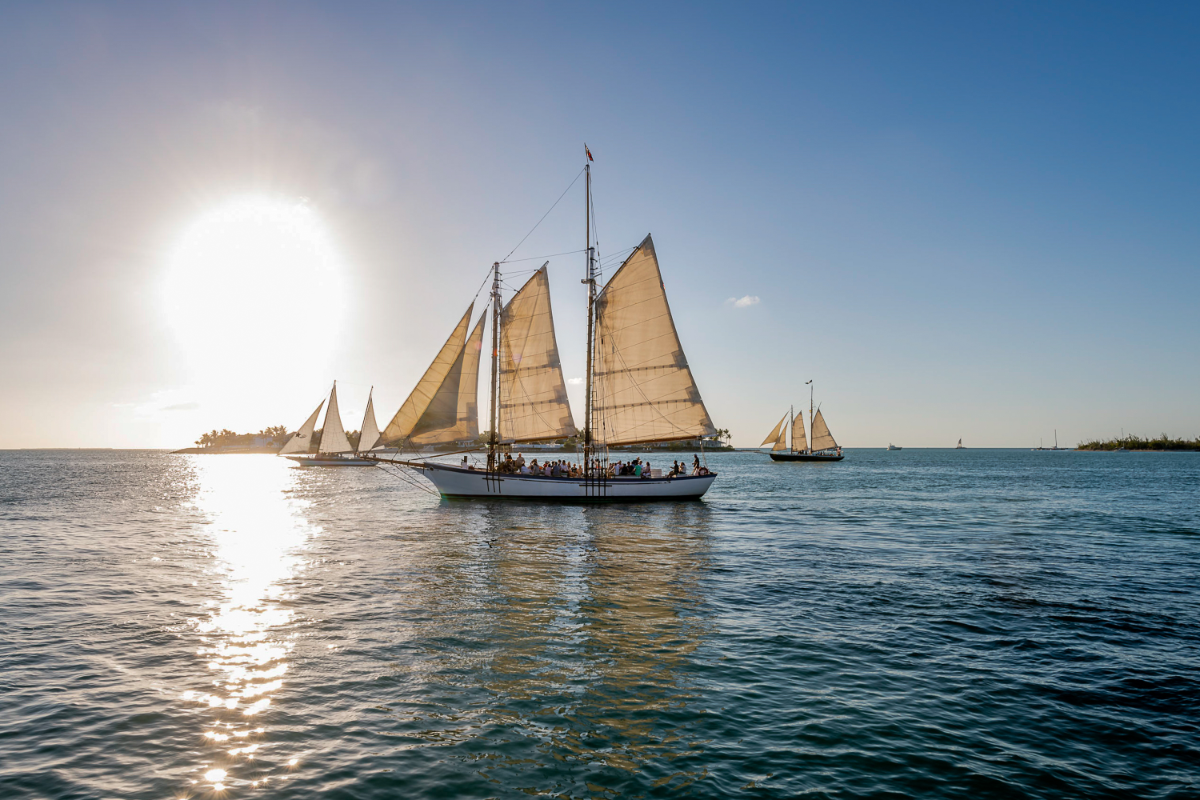Anchoring in the Florida Keys
Anchoring in the Keys has some unique challenges but is well worth the effort. The bottom may be sand, rock or grass and generally offers good holding but, as in any cruising area, attention to depths, tides and general surroundings requires vigilance. The payoff is a night spent under the stars with the gentle lapping of waves on your boat's hull lulling you to sleep!
Things To Know
- Never anchor over coral.
- Anchor as far away from fellow boaters as possible.
- If the shore is covered in vegetation, scrub or mangroves, expect visitors–the kind that bite!
- Be prepared for 180- and 360-degree swings and strong tidal flows, both of which are common in anchorages in the islands.
- Never use two anchors when one will do. However, if you find yourself in a situation where nothing but two anchors will do, the easiest solution is to set your first anchor and either dinghy out your second anchor or drop back to put down the second anchor and then position yourself between them. Remember that current and tidal flow always win over wind.
- Always try to dive to check that your anchor has set or check it using a dive mask or a glass-bottom bucket from your dinghy. If the bottom is hard-packed sand or rocky, you may have to dive to set an anchor.
- If you run your generator, consider that noise travels better over water and better still at night. Keep use to a minimum and always avoid quiet times when others may not want to hear it such as during breakfast, sunset, dinner time and nighttime.
- Always set an anchor light. Local boats go about their business at all hours of the night often at high speeds. A conventional masthead light is just too high to warn off someone racing along at sea level. Mount an auxiliary anchor light about 10 feet above the water and see how that looks to you from your dinghy. It could be just the most sensible precaution you ever took.
- Take anchor bearings or get a GPS fix and keep them displayed at the helm station. Check them to ensure that you have not dragged. If the risk is high, make out a roster and keep checking through the night. Most modern chartplotters have a built-in anchor alarm feature that can alert you if you have moved more than a set amount of feet from your point of set. Always use these and consider a backup such as a phone App.
Best Ground Tackle
You need to carry two anchors while cruising in the islands (three if you count your tender's anchor). We recommend a plow or spade type and a Danforth. Fit your anchor to your boat length and go oversize if in doubt. When it comes to anchors, BIGGER is always better. In addition, make sure you know the safe working load and the breaking point of your ground tackle.
Depth and Scope
Scope is the length of anchor rode you put out measured from the bow roller into the water to the anchor and it helps determine how well your anchor will hold under most conditions. Generally the greater the scope, the better. With an all-chain rode 5:1 is sufficient in sheltered water. (That is about 5 feet of anchor chain for every 1 foot of depth at high tide.) With nylon and chain 7:1 scope is good. If you are working in meters, take that initial 5-foot figure and work it as 1.5 meters. It is simpler and errs on the side of safety. Don't forget to add your freeboard (the vertical distance from your bow roller to the water surface) to the depth of the water when calculating your scope.
Dive Site Mooring Buoys
There are almost 500 mooring buoys available on a first-come, first-served basis throughout the Everglades National Park Service. These are provided at no cost to the boater to help protect the coral reef. Boaters can tie off to the 18-inch diameter, blue-striped buoy markers to avoid anchoring on the reef. Run your boat's bow line through the loop of the yellow pick-up line. Cleat both ends of your bow line to the bow of your boat. Never tie the yellow pick-up line directly to your boat as it puts undue stress on the mooring anchor.
Anchoring on living coral within the sanctuary is prohibited. If no mooring buoy is available and you are outside a no-anchor zone, you may anchor in sand; however, if a mooring buoy is available, you must use it and are not allowed to anchor.

